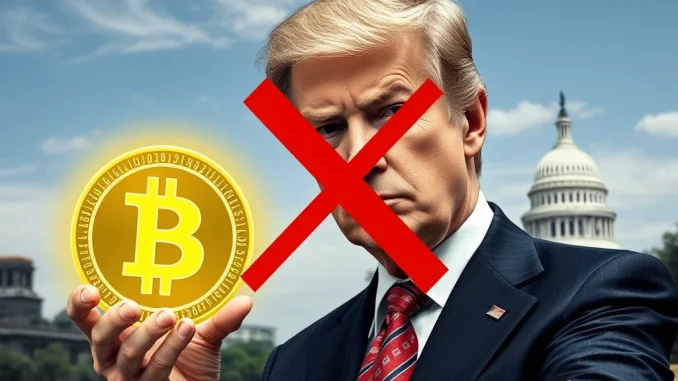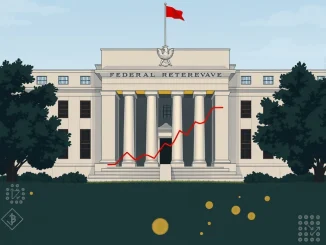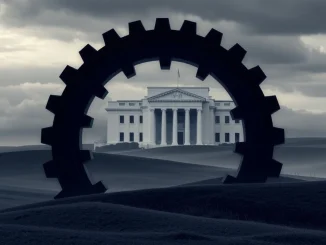
Big news is rippling through the financial world! According to a report from Watcher Guru on X, the U.S. Treasury Secretary, cited as ‘Bessent’, has reportedly come out strongly against the idea of the Federal Reserve issuing a Federal CBDC. This statement adds a significant voice to the ongoing CBDC Debate in the United States.
Why Did the US Treasury Secretary Reportedly Reject the CBDC?
The report indicates that the Secretary doesn’t support a Central Bank Digital Currency, going so far as to describe it as a “sign of weakness.” This is a powerful phrase in policy circles and suggests deep-seated concerns.
While the specific reasons behind this strong sentiment weren’t detailed in the initial report, potential interpretations circulating in discussions often include:
- Privacy Concerns: Fears that a centralized digital currency could allow for excessive government surveillance of citizens’ spending habits.
- Government Overreach: The potential for the central bank to have too much direct control over monetary policy and individual finances, bypassing commercial banks.
- Impact on Banking: Worries about a CBDC potentially disintermediating traditional banks, as individuals might hold accounts directly with the central bank.
- Innovation Stifling: The argument that a government-issued digital currency could compete unfairly or hinder the development of private sector innovations like stablecoins and other digital payment systems.
Calling it a “sign of weakness” could imply a belief that relying on a government-issued digital currency indicates a failure of the existing financial system or a lack of confidence in private sector solutions.
What Exactly is a Federal CBDC or US Digital Dollar?
Let’s clarify what we’re talking about. A Federal CBDC, often referred to as a US Digital Dollar, would be a digital form of a country’s fiat currency (in this case, the US dollar) that is a direct liability of the central bank (the Federal Reserve).
Key characteristics typically discussed include:
- It’s digital money, but different from the digital money in your bank account today (which is a liability of a commercial bank).
- It would be issued and backed by the Federal Reserve, just like physical cash.
- Proponents suggest it could facilitate faster, cheaper payments and potentially increase financial inclusion.
- Opponents raise concerns about privacy, security, and the role of the central bank.
It’s important to distinguish this from cryptocurrencies like Bitcoin or Ethereum, which are decentralized and not issued by a central authority. It’s also different from stablecoins, which are typically issued by private companies and pegged to an asset like the dollar.
Where Does This Leave the US Digital Dollar Discussion?
The statement attributed to the US Treasury Secretary CBDC stance is highly significant because the Treasury Department plays a key role alongside the Federal Reserve and Congress in evaluating the potential implications of a Central Bank Digital Currency for the US economy and financial system.
While the Federal Reserve has been researching and discussing the possibility, they have repeatedly stated they would not issue a CBDC without clear support from both the executive branch and Congress. Strong opposition from the Treasury Secretary signals a potential lack of such support from a crucial part of the executive branch.
This doesn’t necessarily mean the idea of a US Digital Dollar is dead, but it certainly indicates significant high-level hurdles and disagreements remain within the government itself regarding its necessity and potential design.
The Ongoing CBDC Debate in the US
The discussion around whether the US needs or should pursue a Federal CBDC has been ongoing for several years. Various reports and analyses have been published by government agencies, think tanks, and academic institutions exploring the potential benefits and risks.
Arguments in favor often highlight potential improvements in payment systems, particularly for cross-border transactions, and providing a secure, digital form of central bank money in an increasingly digital economy. Arguments against frequently focus on the privacy and surveillance risks, cybersecurity challenges, the potential impact on commercial banking, and whether existing private sector solutions (like faster payment systems or well-regulated stablecoins) could achieve similar goals without the risks associated with a government-issued digital currency.
The reported statement from the Treasury Secretary underscores that the concerns held by opponents are significant and are voiced at the highest levels of government.
In Conclusion: A Major Voice Against the US Digital Dollar
The report quoting the US Treasury Secretary CBDC rejection, labeling it a “sign of weakness,” is a notable development in the slow-moving process of evaluating a Federal CBDC in the United States. It highlights the deep divisions and serious concerns held by some key policymakers regarding the potential drawbacks of a government-issued Central Bank Digital Currency. As the CBDC Debate continues, this strong stance from the Treasury adds significant weight to the arguments against pursuing a US Digital Dollar in the near future.



